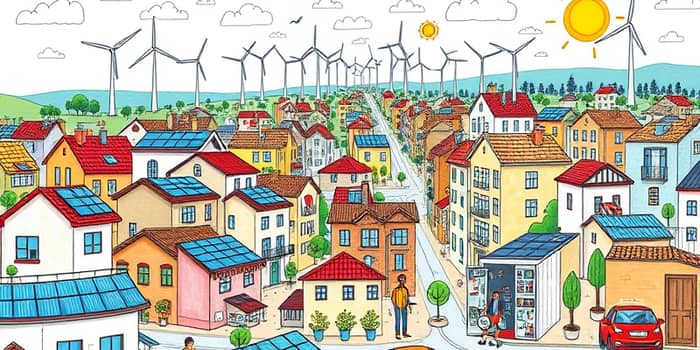As climate concerns intensify, governments around the world have introduced a powerful economic tool: the carbon tax. By placing a price on carbon dioxide emissions, this policy seeks to realign market behavior and fund the transition to a cleaner future. But how does it reach into your wallet, alter prices at the pump, and ultimately reshape the choices you make every day?
This article unpacks the mechanics of a carbon tax, explores its tangible effects on households, and highlights strategies to ease potential burdens—all while framing a hopeful narrative of collective climate action.
Understanding the Carbon Tax
A carbon tax imposes a fee on every ton of greenhouse gas emissions produced, typically measured in carbon dioxide equivalents. As a classic Pigouvian tax addressing negative externalities, it aims to internalize environmental costs that are otherwise ignored in market transactions.
At its core, the tax encourages producers and consumers to seek alternatives that emit less carbon, thereby incentivizing the shift to clean energy. Whether levied on fuel suppliers at the refinery or directly on industrial emitters, the cost generally flows downstream in the form of higher prices for electricity, gasoline, heating fuel, and energy-intensive goods.
Key objectives of a carbon tax include:
- Reducing greenhouse gas emissions and driving meaningful behavioral change
- Raising government revenues for climate mitigation and adaptation
- Stimulating research and development in renewable technologies
- Addressing market failures by reflecting true environmental costs
How the Tax Reaches Consumers
In practice, a carbon tax elevates production and distribution costs for goods and services that rely on fossil fuels. When energy companies pay the tax, they often pass the expense to retailers, transportation providers, and ultimately end consumers.
You may notice higher prices at the gas station, on your electricity bill, or even in the cost of everyday items like groceries—since transportation and refrigeration carry carbon footprints. The exact degree of price increase depends on market competition and regulatory frameworks, but studies indicate that carbon taxes are typically passed through by 80–100%.
Direct impacts include:
- Increased fuel costs affecting commuting and travel budgets
- Higher utility bills for heating and electricity
- Moderate price rises for goods with heavy energy inputs
Importantly, the burden can be regressive for low-income households, which spend a larger share of their income on energy and essentials. For example, a modest $15-per-ton tax could represent over 2% of annual spending for the poorest decile of U.S. consumers, compared to a fraction of a percent for wealthier groups.
Mitigating the Impact and Seeking Solutions
To counterbalance the strain on vulnerable populations, many policymakers adopt revenue recycling measures. By returning proceeds through rebates or targeted programs, governments create a fairer and more inclusive carbon pricing model.
Common approaches include:
- Direct cash dividends to households, often with higher payments to those with lower incomes
- Grants or low-interest loans for home energy efficiency upgrades
- Subsidies for electric vehicle purchases and public transit systems
- Investments in renewable energy infrastructure to lower long-term consumer costs
By designing the policy to return more revenue to struggling families than they pay in taxes, governments can achieve a net benefit for most households while still reducing our collective carbon footprint.
Global Examples and Lessons
Countries that have embraced carbon taxes offer valuable case studies in balancing environmental ambition with economic fairness. Here are two notable examples:
Sweden’s high carbon tax has coincided with significant emissions reductions, robust economic growth, and widespread public support. Canada’s dividend-based model returns over 90% of revenues directly to households, protecting low-income earners and preserving political feasibility.
Charting a Sustainable Path Forward
The promise of a carbon tax lies not only in the emissions it averts but in the cultural shift it fosters. By assigning a tangible cost to pollution, societies send a clear signal: our choices matter, and cleaner alternatives are within reach.
Consumers can play an active role in this transition by:
- Adopting energy-efficient appliances and retrofitting homes
- Shifting driving habits—carpooling, biking, and using public transit
- Supporting companies that prioritize sustainability practices
- Engaging with local policymakers to advocate for equitable carbon pricing
In tandem with well-designed policy measures—such as revenue recycling, targeted rebates, and investment in green technology—a carbon tax can be a catalyst for innovation, prosperity, and a healthier planet. By understanding its mechanisms and potential benefits, consumers can make informed decisions and demand systems that protect both wallets and the world we share.
Together, through thoughtful policy design and conscientious consumption, we can transform a tax on emissions into an opportunity for universal progress and a resilient future.
References
- https://earth.org/explainer-what-is-a-carbon-tax-pros-and-cons-and-implementation-around-the-world/
- https://en.wikipedia.org/wiki/Carbon_tax
- https://www.imf.org/en/Publications/fandd/issues/2019/06/what-is-carbon-taxation-basics
- https://taxfoundation.org/taxedu/videos/carbon-tax-explained/
- https://www.homaio.com/post/carbon-tax
- https://www.elibrary.imf.org/display/book/9781138825369/ch006.xml
- https://www.pgpf.org/article/what-is-a-carbon-tax-how-would-it-affect-the-economy/
- https://www.investopedia.com/terms/c/carbon-dioxide-tax.asp










